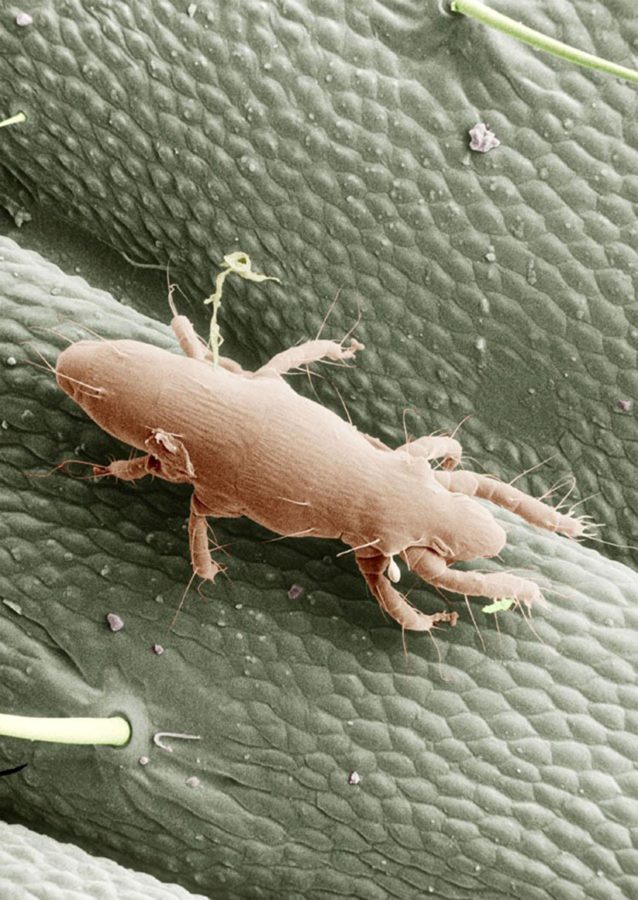Don’t call it a comeback
Warm weather brings return of the Oak Mites
November 4, 2015
As summer ended and the fall semester started, an itchy outbreak began on campus. People started to get covered with little red bumps.
Fear not, helicopter parents. These were caused by bites from oak mites, which are making a resurgence with the warm autumn weather.
The bite resembles that of another mite which people can’t stand–chiggers. The welts become itchy and irritated, causing a rash surrounding the bite.
One tiny female can carry up to 250 young, which causes a mass outbreak. Until they hatch, the mites stay on the leaves of an Oak tree—hence their name. Depending on conditions and number of female mites, a tree can shed up to 370,000 mites a day, according to entomologist Justin Talley from Oklahoma State University.
Humans and pets are not actually what the mites want. We become accidental hosts. Once they bite a human, the bugs realize this isn’t what they want and go away.
“When they were in full swing, I would get out of the car and instantly be bitten,” Terrace resident Kendall Spicl said. “They were also all around the outside of my window, and they are so tiny that they easily got inside.”
Lucky for us all, these bites are annoying but not dangerous although itching the irritated areas can cause secondary bacterial infection.
“Running outside for cross country, I was bitten all the time by these things. They got really annoying,” student Melissa Kroll said.
Earlier in the semester, the Wildcats softball team was bothered enough that a practice was cancelled due to the ornery critters.
“Our coach looked up remedies and couldn’t find any that worked. So we had to call off practice in the middle of our workout,” said Melanie Alyea, a first basemen for the Wildcats.
One way to avoid being a victim of these bites is to use bug spray. Different reports have conflicting views whether the spray actually works. The mites die off once the first real hard frost hits.










